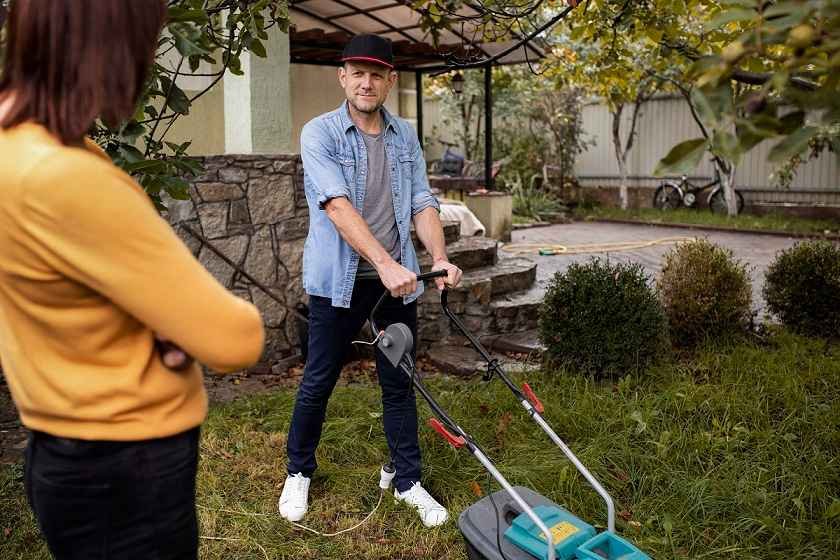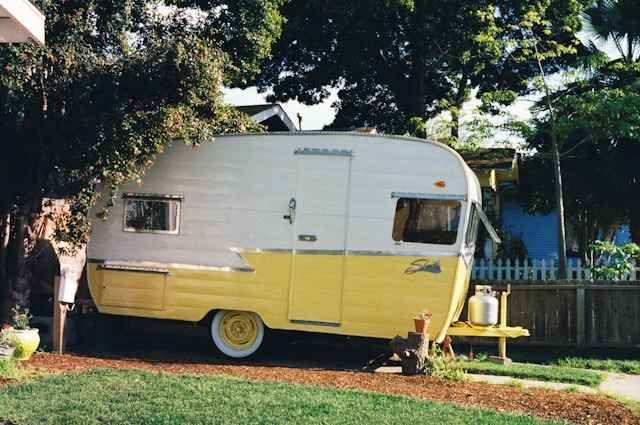Taking care of a lawn can sound difficult, but it really doesn’t have to be. The secret to a good-looking yard is not spending all day outside with tools. It’s about knowing what to do and when to do it. With a simple routine, anyone can keep grass healthy and green from spring through winter. Here’s how to stay on track without turning lawn care into a full-time job.
Spring: Start Fresh
Spring is the time to wake up the yard. Winter leaves behind dead grass, leaves, and twigs that block sunlight and air. Start by gently raking the grass and removing any debris. This helps the grass grow better and gives new seeds a chance to settle.
This is also the perfect season to repair bare patches. Sprinkle grass seed over the thin spots and water them regularly. Keep the area moist until the new grass grows strong.
Spring is also when mowing starts again. Sharpen the mower blades for a clean cut. Many homeowners look for tools that are easy to handle, and electric lawn mowers can be a great choice to get the job done with less noise and no gas needed.
Fertilizing in spring gives grass a strong start. Choose a lawn fertilizer that matches the type of grass in the yard. Following the directions on the package helps avoid damage from too much product.
Summer: Keep It Steady
Summer is when lawns grow the most. Regular mowing keeps the yard looking neat. Grass should not be cut too short. Leaving it slightly taller protects the roots from the heat and helps hold moisture in the soil.
Watering is important in summer. Grass needs about an inch of water each week. Watering in the early morning works best because less water is lost to heat. If it rains enough, extra watering might not be needed.
Weeds can be a problem in summer. Pull them by hand or use a safe weed control product. Keeping the grass healthy and thick also helps stop weeds from growing.
Watch out for pests. Some bugs can damage the lawn. If yellow or brown spots appear, check for signs of insects. Lawn care stores often carry treatments that solve these problems safely.
Fall: Get Ready for Rest
Fall is the time to help the lawn prepare for winter. Rake up fallen leaves before they pile up. A thin layer of leaves is fine, but too many can block sunlight and trap moisture, which can lead to disease or kill the grass underneath. Raking also keeps the yard looking neat and stops pests from making a home in thick piles of leaves.
This is also a good time to aerate the soil. Aerating creates tiny holes that allow air, water, and nutrients to reach the roots. It helps grass recover from the heat and wear of summer and grow stronger for next year. Many homeowners rent or borrow a simple tool called a lawn aerator, which makes the job easy.
Fertilizing in the fall is one of the best ways to protect the yard over winter. A slow-release fertilizer gives the grass what it needs to store energy. This stored energy helps the grass roots grow deeper and get ready for a strong comeback in spring. A good fall fertilizer also supports disease resistance, which helps the lawn stay healthy during the cold months ahead.
Winter: Protect What You’ve Done
In most places, grass does not grow in winter. There’s no need to mow, but that doesn’t mean the yard can be forgotten. Avoid walking on frozen or snow-covered grass. Foot traffic on frozen grass can break the blades and damage the crowns, which are the growing parts of the grass plant. Damage in winter often leads to weak or bare patches in spring.
It’s also smart to prepare tools for the next season. Make sure garden tools are cleaned, dried, and stored away safely. This prevents rust and keeps everything ready for use when spring arrives. Lawnmowers, trimmers, and other equipment should be checked and, if needed, serviced before being put away.
Don’t forget to check hoses and outdoor faucets. Hoses should be disconnected, drained, and stored to prevent cracking from freezing temperatures. Outdoor water lines should be shut off and drained so they don’t freeze and burst.
Some shrubs and trees can be pruned in winter. Without leaves, it’s easier to see the shape of the plant and spot any weak, broken, or crossing branches. Pruning now helps prevent branches from breaking under the weight of heavy snow and encourages healthy growth when warmer weather returns.
Stay Consistent for Best Results
The best lawn care routine is the one that gets done regularly. Skipping steps can cause small problems to grow bigger. Sticking to a simple plan throughout the year makes yard work easier and helps the lawn stay healthy.
Starting with clean-up in the spring, mowing and watering in the summer, preparing for winter in the fall, and protecting the yard in winter all work together to keep a lawn looking its best.
Having the right tools can also make a big difference. Choosing simple equipment, like an electric mower that’s easy to store and use, saves time and effort.
A lawn that’s cared for regularly grows stronger and looks good with less work. The reward is a yard that feels inviting and tidy all year long.
For more, visit our website, Homethreads







